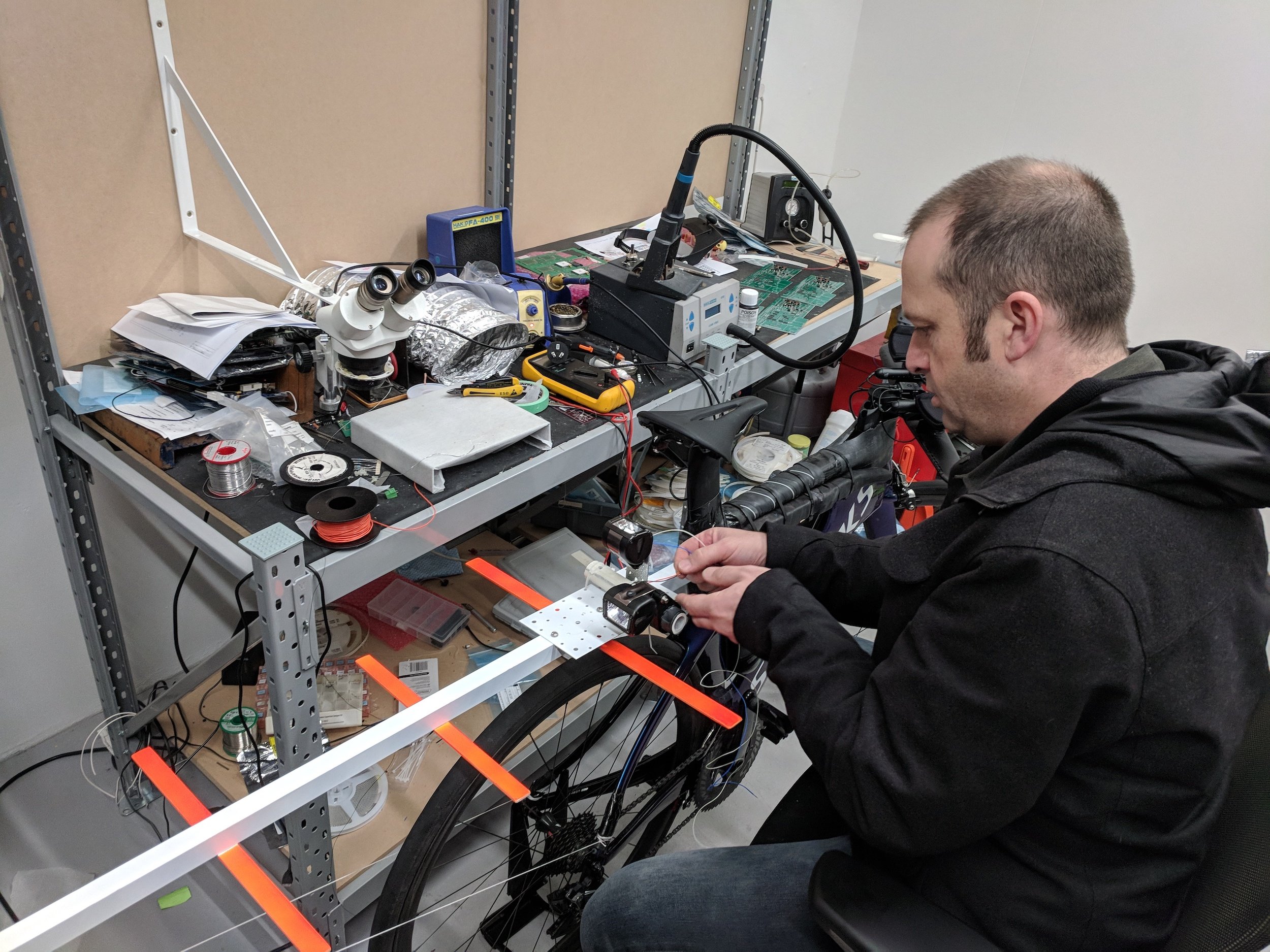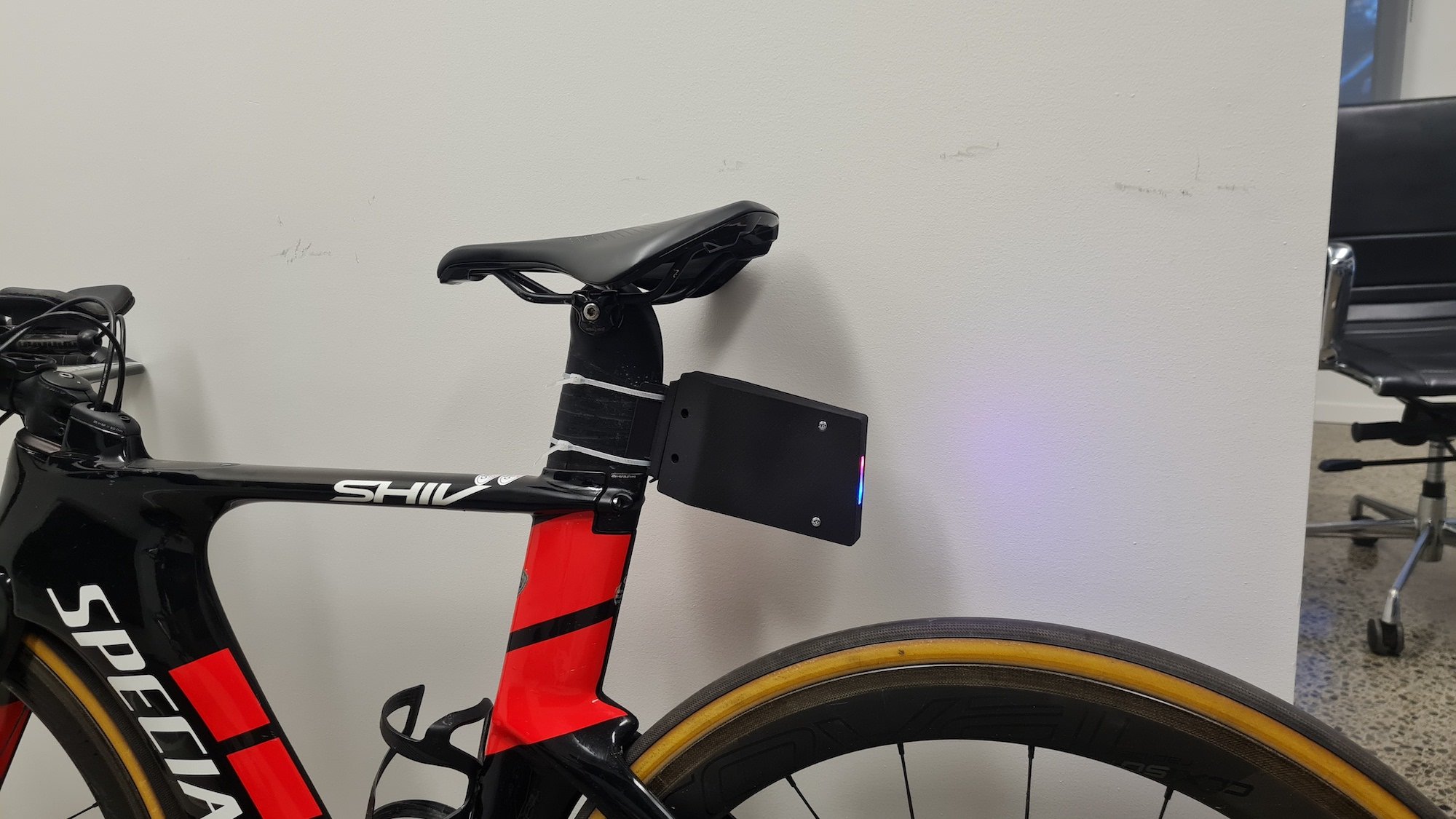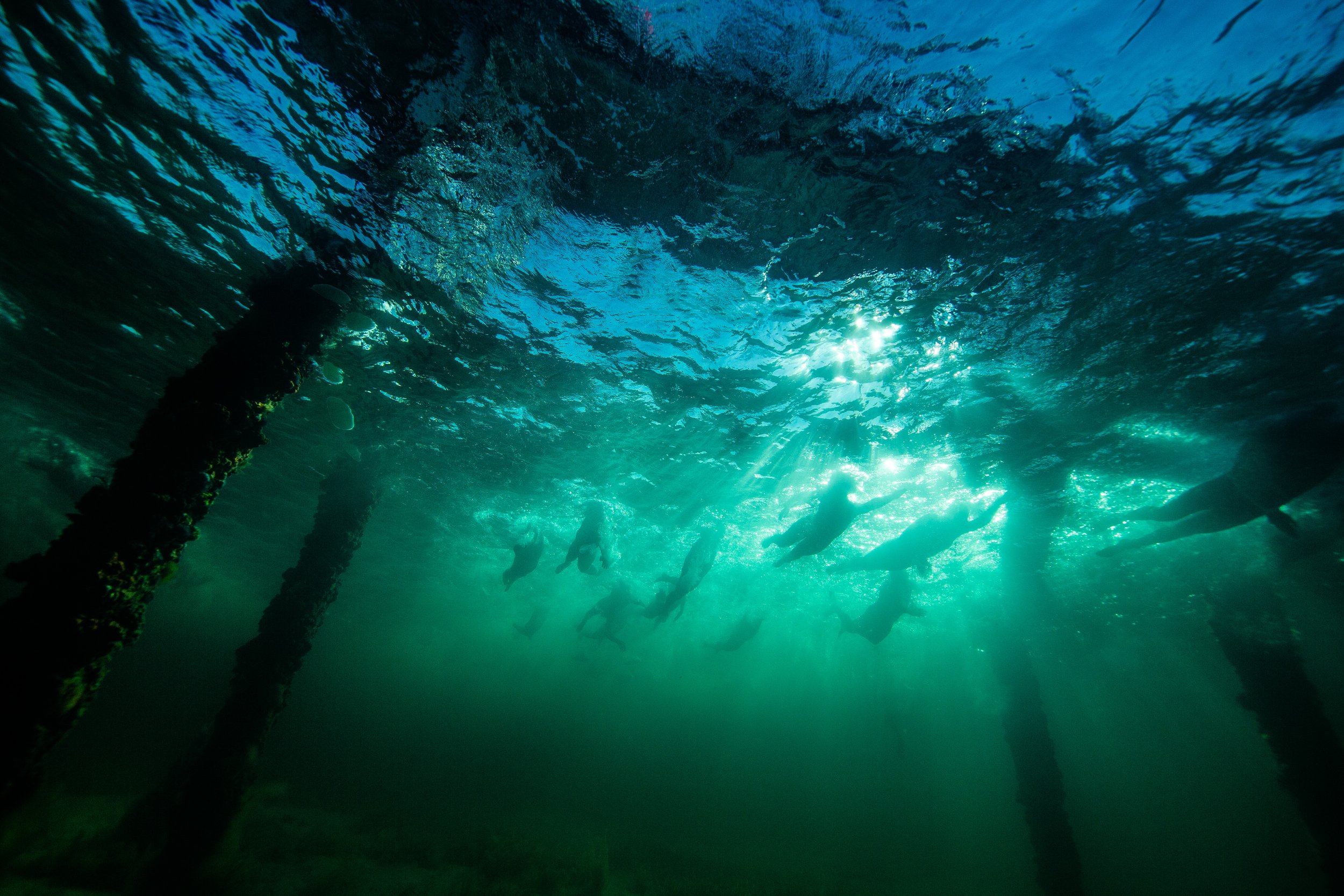Our Story
Over ten years in the making, the world of triathlon now has an electronic solution to the problem of drafting.
In late 2012, James was living in France, in the process of finishing his full-time international triathlon career and trying to work out what to do next with his life. He started looking at opportunities to work within the triathlon events industry, and researching how many athletes are competing in the sport globally. Having been in the sport his whole life, he was struck by the size of the sport the numbers showed. There were a lot more athletes competing than he had realized.
Best Mates
… from racing together, James and Dylan started discussing drafting over emails.
Both were frustrated with their experiences of the problem while racing and were convinced that surely technology could be applied to solve it. James came home and started a new career working at Specialized Bicycles in NZ, while Dylan continued racing into a successful long-distance career.
Early Ideas
The conversation continued over the following couple of years, and the pair eventually investigated installing laser lights on bikes that would shine a light onto the road at a set distance ahead or behind an athlete. Unfortunately, they quickly figured out you would need a very bright laser light, beyond legal consumer brightness levels in most countries, and it would be quite easy to manipulate the system.
Life went on for another year or so, and then the boys started looking quite seriously into ultrasonic sensors. This looked quite promising and in 2014 they first formed a company; Draft Busters Limited, which was soon changed to DM & JE Ltd. After about a year’s investigations, Ultrasonics also proved to be a dead end. They detected everything including trees & road signs, and didn’t distinguish reliably between one athlete and another.
Inspired by Laurent
In 2015 James got married. James and French wife Tatiana had 2 ceremonies, one in France and one in New Zealand. Dylan was James’s best man in NZ, and in France, it was close friend Laurent Vidal, a French athlete. James had spent a lot of time training and living with Laurent and partner Andrea Hewitt both in NZ and France. Sadly, a few months later Laurent suffered a heart attack and passed away in November 2015.
Laurent was a very inspirational person. He lived and trained with the belief (and sponsor Adidas slogan) ‘Impossible is Nothing’. Or ‘They didn’t know it was impossible, so they just did it.’
Back in Auckland, at the one-year anniversary of Laurent’s passing, James and wife Tatiana had decided they wanted to become business owner to get further ahead in life, but just couldn’t figure out what that business might be. It was at this point Tatiana said to James:
“What about your triathlon thing? Can’t you make that work? What would Laurent do? Just bloody do it. Make it work.”
This was the start of 2017. With no prior formal technical knowledge, James spent about a month trawling electronics and wireless sensor internet forums at all hours of the night. He came across the core technology late one night, which looked to meet the requirements for an accurate distance measurement.
James and Dylan met with 8 electronics development companies in New Zealand. None of them had heard of the technology before. They were advised to give this guy Marcus in Christchurch a call, and he met with them the same day. He’d worked with this tech in other projects, had previously made devices and software for sports applications, and had a good understanding of what would be required.
Late 2012
Identified gap in market around drafting, evaluated market size, conducted initial experiments with lazers
2014
Company first registered as ‘Draft Busters Ltd’
2013 – 2015
Experimented with ultrasonic sensors
Jan 2017
Identified apparent viable technologies engaged ILR Electronics to investigate
Mar 2018
Patent Applications filed
APR 2018
Travelled to Commonwealth Games Gold Coast to present concept to ITU
JUN 2018
Pivoted system design from automated system, to keep decision making with the referees
SEPT 2019
Built referee app and demo’d at ITU World Champs Switzerland (no on-bike hardware)
OCT 2020
Each technology proven in isolation. Full system design spec’d. First Full-Time Engineering staff hired
FEB 2021
First ‘Alpha‘ Prototypes built (100 sets) – first in-house PCB’s with all intended components
MAR 2021
Trademarks for ‘RaceRanger’ brand name filed
SEP 2021
First outside angel investor funding round launched
OCT 2021
US Patent Issued
NOV 2021
LAUNCH! First Public Announcement
JAN 2023
First public event trial - Tauranga Half, NZ
FEB 2023
Challenge Wanaka
Mar 2023
Ironman New Zealand
MAY 2023
PTO European Open Ibiza & World Triathlon LD World Champs Ibiza
AUG 2023
Paris Paralympics Test Event & PTO Asian Open, Singapore
SEP 2023
Pontevedra World Triathlon Para Championships
NOV 2023
IRONMAN Florida
Signed 3 year agreement with Challenge Roth
Feb 2024
Signed Partnership with IRONMAN for 2024 Pro Series
Singed Agreement with PTO for 2024 T100 Series
SEP 2024
System used at the Paris Paralympics Triathlon &
Women’s IRONMAN World Championships in Nice, France
OCT 2024
Used at Men’s IRONMAN World Championships KONA
DEC 2024
IRONMAN 70.3 World Championships Taupo
Opened first offices in Christchurch, New Zealand
2025
Current work centers around making the system useful and scalable for thousands of age group athletes. We are working on reducing the system to one device, adding a cellular connection to enhance the spectator tracking experience, and race athlete management for enhanced safety.
In 2025 we are again operating at around 40 pro level events, with modest growth, while we put all focus on scaling the system to age groups,
A Tough Problem
It seems simple in theory, but when you get down to it the challenge of policing drafting, actually turns out to be a very complex technical headache. It’s quite easy to create a system that measures the distance between 2 bikes, when they cross a threshold such as the 12m following distance. It’s much harder to accurately define the moment one athlete actually completes, or does not complete a pass.
Then you need to consider the challenge of potentially large numbers of riders grouped together at one time. And perhaps one pack of riders that are travelling in one direction, while another pack are travelling along the other side of the road in the other direction… The system needs to be reliable and work for every athlete, every time.
Among other requirements, The team’s vision for RaceRanger crystalized around its need to be super accurate, consistent and reliable, whilst not being too bulky or heavy.
Getting it Done
The 7 years from 2017 to early 2023 were a very long, hard and at times expensive slog with multiple more dead-ends along the way.
Beyond being consistent, reliable, accurate and tamper-proof, the system must not interfere with the athlete’s race experience, or significantly change the flow and operations of current races for the organisers.
Starting with a video prototype, James & Dylan showed it to a lot of referees, as well as World Triathlon (ITU at the time), and Jimmy Riccitello the head referee at Ironman. They also interviewed 40 athletes from around the world of all levels to get their feedback and input. The system described in that initial video prototype was a fully automated system, which took away the need for the motorbike referees. The strong feedback received was to keep the referees involved in some way.
From here the team spent more time with referees at races and saw a need for an app to connect their activities on race day, which the on-bike hardware would later feed the drafting data into.
They came up with the idea of mounting a tablet on the back of the motorbike driver, with a custom designed harness. Sadly many backpacks were slaughtered in the making of this harness design.
A prototype version of this app was built, and tested during the age group event at the ITU World Champs in 2019. A lot of great feedback from some of the top officials in Europe was gathered at this event, and taken back into the development process. One referee commented “I don’t see how we can just go back to using pens and paper now after that. It just feels natural.”
By mid 2020 in the midst of Covid-19, the growing team felt they had the overall system design figured out. Each of the technologies worked individually in isolation to perform their individual tasks that would make up the eventual system. It was then a case of combining them altogether into one single unit as small as possible, and getting the units as a whole to function as intended.
In early 2021 the first full oversized prototypes were built by engineers at ILR Electronics & RaceRanger staff working out of the University of Canterbury. These prototypes allowed the engineers to experiment with a range of antennas, and adjust their positions within the units, before trying to shrink the enclosure size down.
IT’s alive!
In late 2021, the company Precision Triathlon Systems Ltd, raised it’s first round of outside funding, and began building a 3rd iteration of prototypes.
The funding allowed rapid product development to a stage where a decent number of units could be tested in the wild at an event.
In January 2023 RaceRanger was trialled for the first time at an Elite level event in New Zealand. The Tauranga Half, part of the Mount Festival.
In 2023, a difficult time for start-ups to raise capital, RaceRanger successfully raised a second funding round.
Bringing RaceRanger to Life
Through 2023 RaceRanger went on to be tested at multiple pro level events, before being deployed to 11 Pro level events including the PTO Triathlon Pro Tour.
Ultimately, to justify the investment of time, effort, capital, blood sweat & tears…RaceRanger needs to be applied not only to the pro athletes, but also to the amateur / age group fields. We have built the system with this ultimate goal in mind from the beginning, and continue to refine the system to be appropriate for age gropers.
NEXT STEPS
In early 2024 we are working on a further iteration of the devices, and producing 500 sets of units to serve up to 50 events around the world.
Now in early 2025 we have built out a delivery team to again operate at approximately 40 of the highest level pro events.
A trial Age Grouo event with 270 athletes using the system was held in February 2025 at Challenge Wanaka, with glowing reviews from athletes and officials. Key learnings from this event will be incorporated into the next iteration of the system.
Back in New Zealand, the R&D focus is now on adding exciting new pieces of functionality, while working to make the system more scalable and easier to deliver in the future for those age group size fields. We have grown our engineering capability with the addition of a Senior Engineering Manager - Andrew Moss, and opened our first offices in Christchurch, New Zealand.
Come With us!
If you’d like to hear more and follow the rest of the journey as we bring RaceRanger to life, or perhaps to discuss investing in the company, drop us an email at hello@RaceRanger.com , give us a follow us on social media or join our mailing list below;

















